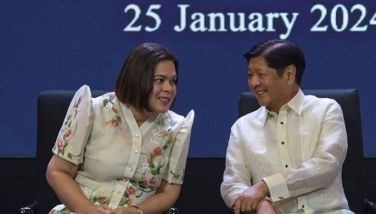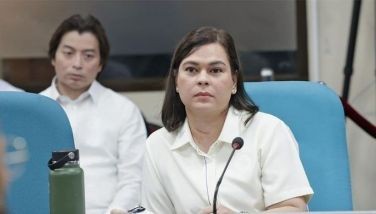The prequel to Putin’s war

We’ve all seen the horrid images of military aggression… of attacks against civilians.… of destruction of properties… of separation of families… of death. To understand why Vladimir Putin feels his war is justified, we must put context to Ukrainian geography, society and recent political events.
The Ukraine was once part of the USSR. By land area, it is the second largest country in Europe after Russia. More importantly, it is the landmass that stands between Russia and Europe. Ukraine gained independence on Aug. 24, 1991 and became a sovereign nation. Yet even today, it maintains deep ethnic and cultural ties with Russia. In fact, the eastern part of the Ukraine, where the region of Donbas lies, is predominantly Russian speaking. So is Crimea.
What triggered the invasion? The answer lies in the region of Donbas, in the eastern seaboard of the Ukraine. Russia demands that Donbas be autonomous so it can control it, like it does Crimea. The Ukraine refuses to cede control. Both parties are at deadlock on how to handle the Donbas region.
Of course there are other reasons for the invasion, the first being strategic. Russia cannot afford the Ukraine to join the EU and/or NATO as it was inclined to under the government of Volodymyr Zelensky. Doing so will expose the Russian mainland to security risks. The second reason is economic. Russia wants the Ukraine for its vast resources, particularly its iron, titanium, graphite and uranium. It has a thriving arms manufacturing industry too, which Russia wants to control. In agriculture, the Ukraine produces 18 percent of the world’s barley and 16 percent of the world’s corn supply.
The Ukraine has had seven presidents since gaining independence in 1991. Its fourth president, Viktor Yanukovych, was unabashedly pro-Russia. He was a member of the Communist Party of the Soviet Union in the 80’s and headed the Ukranian Party of Regions in the 90’s. The Party of Region’s philosophy is one that is pro-Soviet, Eurosceptic and anti-American.
Yanukovych was elected in February 2010. Barely two months into office, he signed an agreement that extended Russian lease for a naval base in the Black Sea until 2042. In exchange, Russia committed to sell natural gas to the Ukraine at a 30 percent discount.
The move was unpopular among the Ukrainian people as it was seen as giving Russia military leverage over Ukrainian land, specifically Crimea, for a mere discount on gas. Yanukovych’s popularity crumbled, exacerbated by numerous corruption scandals. In a move to recoup approval ratings, Yanukovych declared in early 2013 that he was in favor of signing the European Union Association Agreement (EUAA), a treaty that would draw the Ukraine closer to the European Union. The move was popular, given that the majority of Ukrainian society aspires for European style democracy, economic reform and a modern (non-Soviet) way of life.
In November 2013, however, Yanukovych went back on his word and suspended the signing of the EUAA. This triggered civil unrest across the land. It started with protests, that turned into riots, that morphed into civil disobedience. Widespread political discontent eventually spawned the “Euromaidan Movement,” which called for the resignation of President Yanukovych.
Yanukovych responded by passing Anti-Protest Laws to suppress the movement, which only incensed the people more. The riots intensified. Eventually, Yanukovych and his officials were ousted and fled to Russia. This elicited protest in Donbas and Crimea, both pro-Russian regions. While all of these were happening and with the Ukrainian people distracted by politics, Russia invaded Crimea on March 16, 2014 and eventually took control of its government. Were the events orchestrated by Russia? Many analysts believe so.
In January 2014, Petro Poroshenko was elected president. Poroshenko heads the European solidarity party that is pro-Europe and pro-America. Thereafter, Vladimir Putin made a public announcement saying that he would protect the rights of all Russian-speaking people in the Ukraine, particularly those in Crimea and the Donbas region. This made the people of Donbas feel more connected to Russia than it did its own Ukrainian government. Separatist movements in Donbas ensued, with arms supplied by Russia. Tensions rose to new heights.
On Sept. 5, 2014, a ceasefire agreement between Russia and the Ukraine was signed. It was called the Minsk Agreement. However, it failed due to numerous ceasefire violations. On Sept. 15, 2015, another ceasefire agreement was signed called The Minsk 2 Agreement. It failed too.
Russia knows that for as long as there is conflict in the Ukraine, it will never be admitted to the NATO or the EU. This is one of the reasons why it fans the flame of conflict in Donbas.
On April 21, 2019, Volodymyr Zelensky was elected president. To resolve the Donbas conflict, Zelensky agreed to adopt the “Steinmeier Formula” peace plan. The formula called for Ukraine to grant self-governing status to Donbas after conducting local elections to ratify it. It specified, however, that before elections can take place, a total ceasefire and withdrawal of Russian troops must first take effect. Russia disagreed. Russia demanded that elections should first be held before a ceasefire and withdrawal of troops be effected.
The Ukraine could never agree to Russian terms. To do so practically guarantees that Donbas will fall under Russian control. See, the Donbas region has been cut off from Ukrainian politics and media for eight years. It has been under the influence of Russia. Hence, it will be extremely difficult for Ukraine to counter the Russian narrative for as long as Russian troops occupy Donbas.
Both parties found themselves at a stalemate. The inability of both parties to agree on how to handle Donbas is among the principal reasons why Russia invaded Ukraine on that fateful day of Feb. 24, 2022.
* * *
Email: [email protected]. Follow him on Twitter @aj_masigan
- Latest
- Trending



























